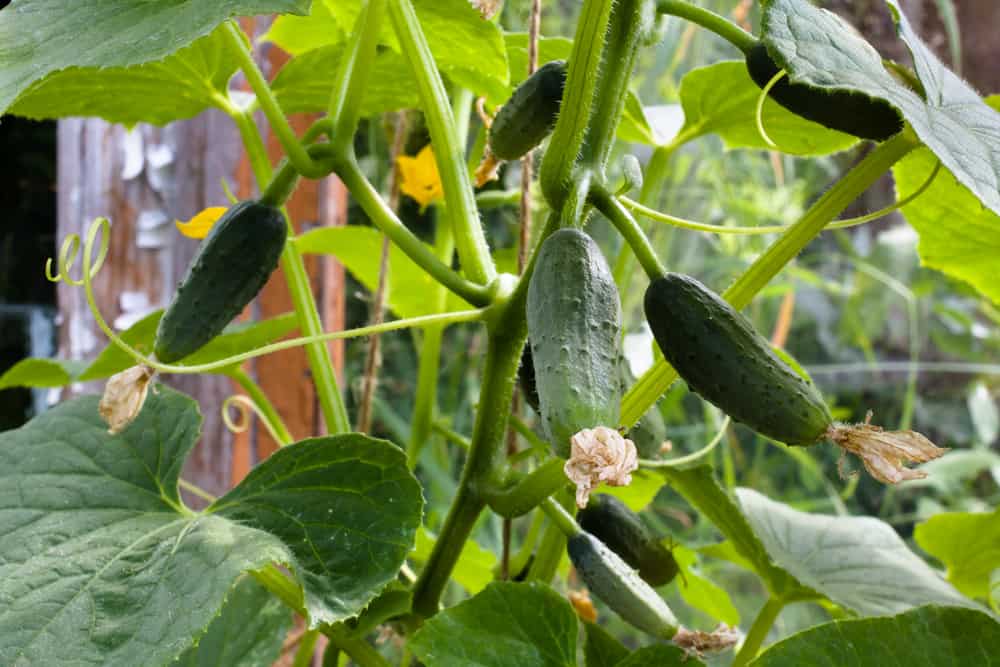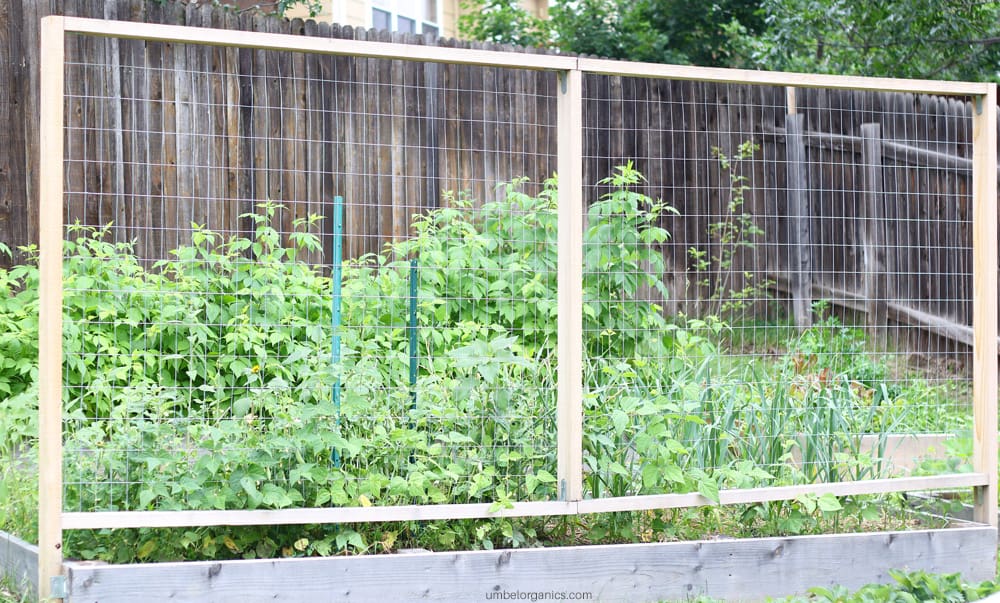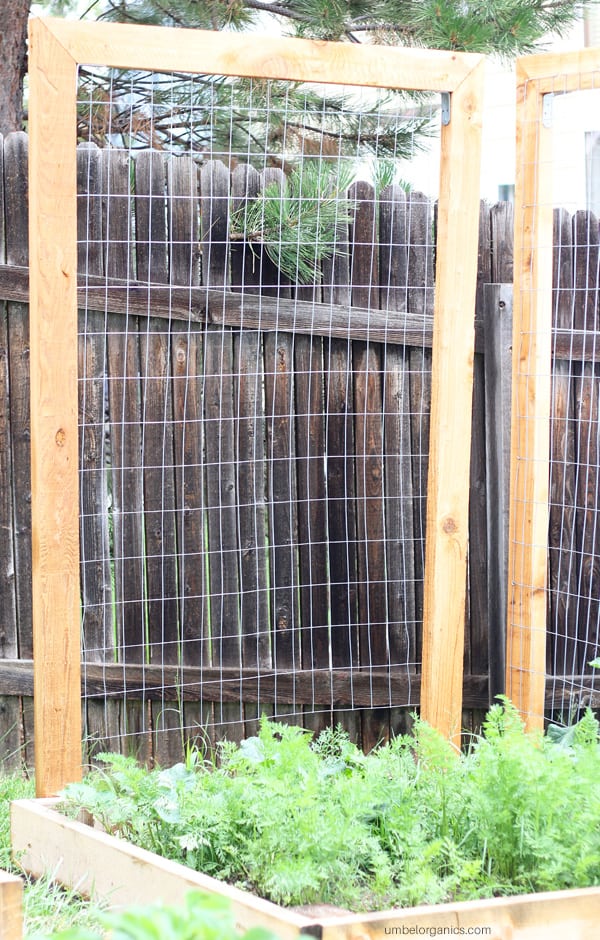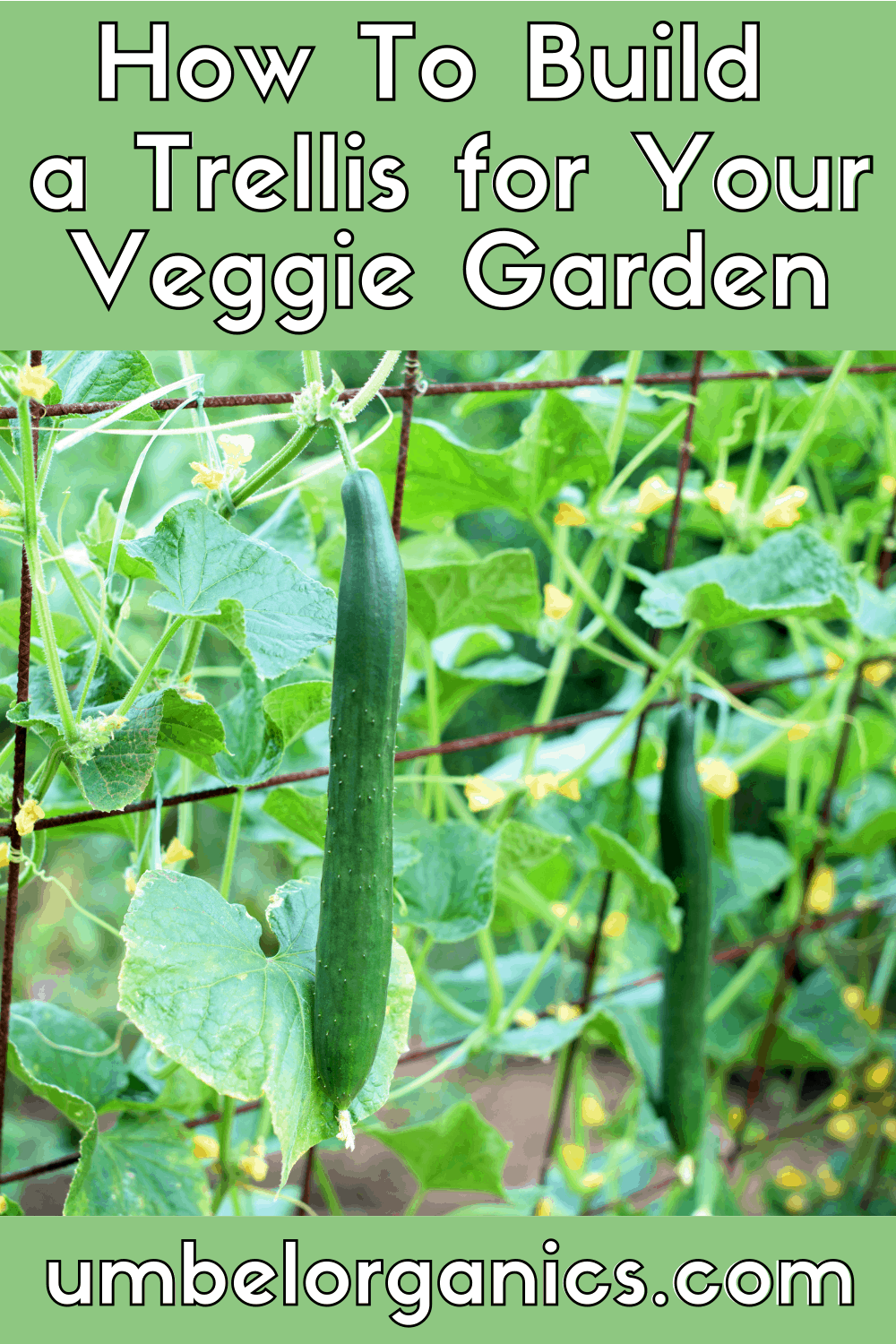Tips For Building a Garden Trellis & Vertical Growing
Whether you want to maximize your garden space or keep your plants disease free, a garden trellis is the perfect way to grow vining fruits & vegetables. We’ve got everything you need to know about building a sturdy trellis and the best vegetables for growing on a trellis.

Disclosure: This post contains affiliate links, which means if you make a purchase through these links, we may receive a small commission at no extra cost to you.
A trellis is an easy way to get your vegetables off the ground and to maximize garden space. With vertical gardening, we’re able to grow more vegetables without sacrificing extra space in our raised garden beds.
We constructed a few simple trellises made from cedar and hog panels, and they work so well to grow “up” our pole beans, peas and cucumbers.
Some Of The Many Benefits To Using A Trellis In Your Garden
- More space for other crops– I’ve said this before, but you can really maximize your garden bed by growing vining varieties on a trellis.
- Easy harvesting– Jeremy has a bad back, and trellised plants are easier to harvest. There’s no bending over and searching through foliage for cucumbers or beans. You can also spot a cucumber or pea pod more easily when the plants are growing vertically.
- Reduced disease and pest damage– The spread of soil-borne diseases is reduced when the foliage is off the ground and not in direct contact with the soil. Growing up a trellis also keeps ripening fruit away from pests like slugs and rabbits.
- Reduced dirt splatter– Whether from your hose or a rainstorm, a strong water blast can splatter dirt all over your vegetables. A trellis keeps fruit and vegetables from collecting muck and dirt.
- Improved air circulation– Air circulation is improved when plants are off the ground. Cucumbers, squash and melon plants are prone to powdery mildew. Growing them on a trellis allows airflow and sunshine to keep the leaves dry and reduce chances of getting powdery mildew.
- Provides shade– Position your trellis to shade any vegetables that you don’t want baking in full sun all day.
- Eliminate ground rot– With no fruits and vegetables sitting on the ground, your crop won’t suffer from the effects of ground rot.
- Straight fruit– Vining crops like squash, melons and cucumbers will produce straighter, longer fruit on a trellis. Without the help of gravity, a cucumber grown on the ground will have a pronounced c-shape.
- Improved production– Trellised plants are exposed to more sunlight, which encourages fruits to ripen faster.

Types Of Vertical Trellis Supports
How To Build A Vegetable Garden Trellis
Our Garden Trellis
We use cedar 2 x 4’s and hog panel fencing. The trellis is sturdy and the hog panel is slender enough for the tendrils to wrap around. Cedar is very rot resistant and easy to find, but you can substitute other rot resistant varieties such as redwood if needed.
We recommend a trellis that’s tall enough to accommodate growing vines, but not so tall that you’d have to stretch to pick. Our trellises measure 6 feet tall, but anywhere from 4 to 6 feet will work for growing most vining plants vertically.
If your vines begin to grow out of hand, pinch off the top tip of the vine. This diverts energy back into growing and ripening the fruits.
Hog panel fencing provides strong support for heavy vines and fruit like melons, summer squash and cucumbers. If you go with netting or string instead, it’s best to use it for lighter vines like pole beans.
How To Train Plants To Climb A Trellis
Many vining crops will climb vertically by themselves using twisting tendrils to grasp the support. Others may require twist ties or twine to help them grow up.
Check your plants regularly to see if they attach to the trellis on their own. Encourage the plant to climb by gently weaving the vines through the trellis. The tendrils will grab on as they grow.
You may need to tie the vines onto your trellis. We use jute twine. You can also use plastic flexible plant ties or plant clips. Tie them loosely so the stem doesn’t break.
The Best Vegetables FOor A Trellis
- Pole Beans: We LOVE growing pole beans. They’re easy to grow on a trellis, and quickly start climbing any support you give them. Pole beans also have a far longer harvest window than bush beans and are known for producing beans with incredible flavor. Pole beans should be picked every 2-3 days to keep them producing. If you leave mature beans on the vine too long, the plant will stop producing beans.
- Peas: From garden peas to sugar snap peas to snow peas, there are many types and varieties of peas to grow. Peas that climb taller than 3 feet will need the support of a strong trellis. Once the pods reach a harvestable size, pick them every 1-2 days.
Pea vines may need to be trained to grow vertically. Gently position the vines onto the trellis as they get taller. Being gentle is key with peas, as the vines are very delicate. If you’re worried about stem breakage, you can tie the vines on the trellis with jute twine or flexible plant ties. - Cucumbers: Choose vining cucumber seeds when selecting seeds for growing. The vining tendrils are specialized stems that grow out of the main stem and grab onto surrounding support. Cucumber vines are large and fairly heavy, so you’ll need a strong trellis. Our cedar and hog panel trellis is sturdy enough to handle cucumber plants, but an A-frame style trellis works just as well.
Harvest cucumbers often so they keep producing. - Summer Squash: There are a few varieties of summer squash that can be grown vertically. They’re not natural climbers, so weave the branches through your support the vines grow. Jute twine can be used to loosely tie the stems to the trellis.
- Melons: You’ll need a heavy-duty trellis to grow melons vertically. Melon fruit is on the heavy side, and can fall to the ground as it ripens if not supported. Construct a sling made from fabric or pantyhose to support the growing fruit. Rest the melon in the fabric and secure both sides to your trellis. Watermelons are not an option for growing on a trellis since they grow so big.
- Indeterminate Tomatoes: Indeterminate tomatoes can be secured to a trellis as they grow. We personally don’t trellis our tomatoes, preferring to use other methods of support instead. If you do use a trellis, secure the vines with jute twine or tomato clips. Trellising tomatoes is a good way to reduce common foliar diseases that attack tomatoes.


More Gardening Inspiration
top 3 images via depositphotos


